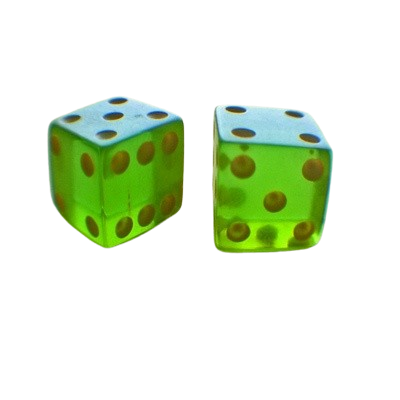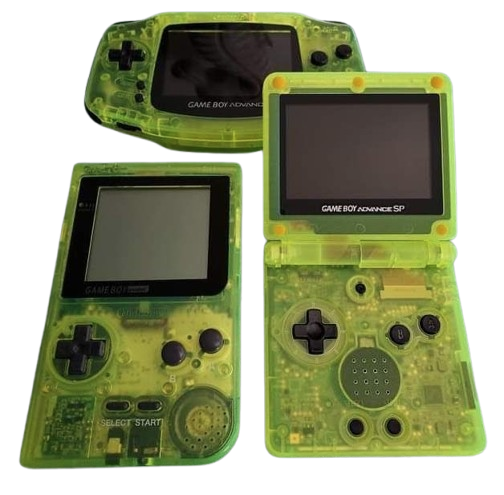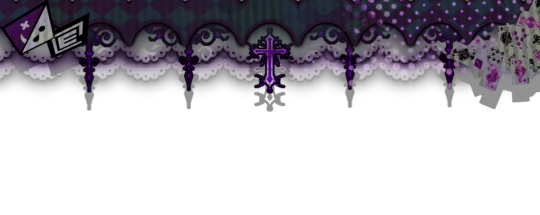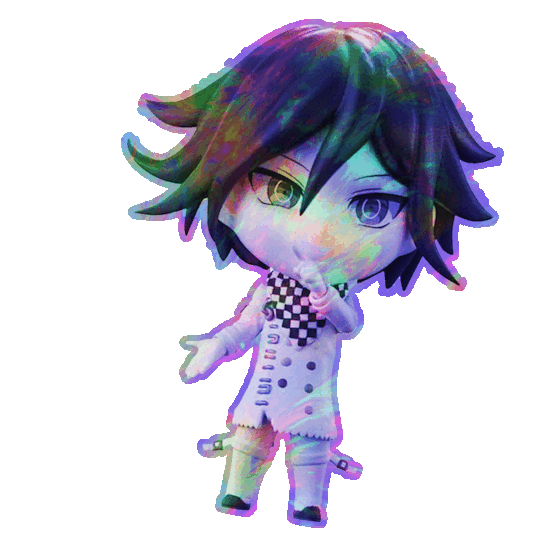#dice resource
Explore tagged Tumblr posts
Text
New Dice Wiki – Help Needed!
Following the bankruptcy and closure of Shapeways, one of the dice community members, Adeline, has opened a new Dice Wiki to document valuable information about the vast variety of self-designed dice shapes that are out there.
The Wiki has in the meantime been expanded to include information about all kinds of commercially available dice and dice brands, and it’s grown into a community project that we’d like to fill with as much information as possible.
The Wiki is hosted on Miraheze, a free to use, open-source and ad-free Wiki hosting service at dice.miraheze.org.
To make the Dice Wiki as rich and informative as possible, we need the community’s knowledge and expertise! In particular, it would be great if we could find more people who can help with:
Filling the unclaimed pages for listed dice brands with information (those with red links).
Editing or expanding existing pages to improve their quality and accuracy.
Uploading and adding photos that are missing. (These need to be your own photos or photos you have explicit written permission to use.)
Reaching out to brands or shops to ask for written permission to use their shop photography to upload into the Wiki.
While the Dice Wiki can be edited anonymously, it might be best to register with an account so you can be officially added to the Wiki team of writers. You will also need to follow the Wiki guidelines and policies and adhere to the fair use and Creative Commons principles. We have a Dice Wiki User Guide that gives you the basics.
We have a progress tracker in Google Sheets where you can check which sections still need work or who is working on what, e.g. in the Dice Brands tab. There’s also a Template Texts tab with template code text if you want to create new pages or upload shop logos (which would fall under the “fair use” principle).
Please note that the Dice Wiki is meant to be an informational database and not a promotional platform for commercial businesses. It is not meant to be a list of online dice sellers but should stay limited to factual information about brands and creators who design, create or manufacture dice that are unique or exclusive to them. Promotional content will be deleted.
The existing Dice Discord server has a channel dedicated to the Wiki work. Feel free to join if you'd like to hep with the Wiki.

#dice#wiki#dice wiki#dice information#dice resources#rpg dice#polyset#polyhedrals#polyhedral dice#pipped dice#dice resource
0 notes
Text










͡ ㅤ𓈒 gamble/jester pixels ! .
₊ reblog to use . ㅤ۫ 𓏏𓏏
₊ ˘ request by anon ༢
#ᛝㅤㅤㅤㅤㅤposts。ㅤㅤㅤㅤㅤ﹢#ᛝㅤㅤㅤㅤㅤpixels。ㅤㅤㅤㅤㅤ﹢#pixel aesthetic#pixels#rentry pixels#pixel graphics#pixel#pixels rentry#rentry resources#rentry stuff#rentry gif#rentry decor#jester#clowncore#clown#gambling#gambler#gamble#dice
773 notes
·
View notes
Note
Gambling themed dividers? (not just card suits but like, dicee, coins, roulette possibly ect)





🎲Gambling Dividers🎲
please like, reblog, & credit if you use!
[DIVIDER REQUESTS ARE OPEN!]
DNI: TERFS, endo, proship, pro ana, nazi, MAPs, zoophiles
tag list: @ghostboneswrites2 @savanaclaw1996 @bloodythornsandskulls @humancorps3 @imachaoticghost
@und3ad-mutt @ribbed-scythe @idkwhatto-namethis @nothers @yourlocaltrasheater
@ang3l-d1nn3r @puppy-monst3r @orisaspirin @bunnyb0yy @blindweb
@worstwolverinesbf @wardenofbanland @weirdest-worlds @king-of-dumbasses
[if you’d like to be on the tag list for dividers, please leave a message in my inbox]
#sister lucifer’s dividers#dividers#aesthetic#aesthetic dividers#red#red aesthetic#red dividers#black#black aesthetic#black dividers#red and black#black and red#cards#card suits#dice#dice aesthetic#red dice#black dice#poker#casino aesthetic#casino#cards aesthetic#playing cards#endos dni#proship dni#rentry graphics#rentry resources#rentry decor#kakegurui
411 notes
·
View notes
Text





#f2u#my graphics#web graphics#png#web resources#collage#scrapbook#carrd resources#carrd graphics#rentry graphics#rentry resources#blog graphics#blog resources#imageboard#page decor#transparent png#decorations#stickers#xbox#playstation#game boy#dice
148 notes
·
View notes
Text


⟣ self indulgent , 25x25 pixels
︵︵︵︵︵︵︵︵︵︵︵︵︵︵︵︵︵︵︵︵︵︵










shadow milk ck is obvi bigger than 25 x 25 btw
#🌈﹚ pixels。#pixels#favicons#shadow milk cookie#cookie run#rentry pixels#sntry pixels#rentry resources#resources#blue pixels#blue rentry#dice pixel#shadow milk cookie pixels
564 notes
·
View notes
Note
Since you do requests and I quite love your stuff so far — anything gambling/poker themed or with card suit motifs in mind?
hiii ~ i hope these work out!
divider creator ~ requests open ~ like & reblog if you use!





જ⁀➴ credit me please & follow for more dividers!
#dividers by kodaswrld#kodaswrld#carrd graphics#carrd resources#resources#aesthetic#carrd stuff#png dividers#pngs#transparent#gamble#gambling#poker#cards#playing cards#poker divider#poker dividers#poker png#gambling divider#gamble divider#red divider#dice#dice divider#white divider
183 notes
·
View notes
Text
Elemental Dice Oracle
Heavily inspired by Stephen Ball's Elemental Divination: A Dice Oracle, I've developed my own system of a quick and versatile dice oracle. All you need is a set of 3 six-sided dice.
The d6 numbers are associated with 6 elements as per Elemental Divination. In brief, they are:
1 - Air 2 - Fire 3 - Water 4 - Earth 5 - Sun 6 - Moon
If you enjoy this divination method, Elemental Divination is excellent supplementary reading, but you do not need to read the book as I will detail my method in full.
Note: Unlike Stephen's method, I read all three dice and infer the answer based on elemental interactions, and the elemental nature of my question. This means a "Greater X over Y" and "Lesser X over Y" oracle can exist in the same reading.
A great read on a similar concept using tarot can be found eloquently written by @windvexer in this post 😊
The elemental nature of the question:
Depending on your approach to the subject of divination, you can associate yourself and your efforts with one of these elements should they appear in the reading, or treat the question's element as a secret 4th dice.
Air: matters of the mind, learning, logic, memory, intellect, communication, travel, work relationships (acquaintances, colleagues, customers/clients), persuasion and public speaking, matters where rapid action and quick thinking is needed.
Fire: matters of desire, motivation, passion, sexuality, willpower, inspiration, and health (in terms of innate constitution and vitality), situations where might and zealousness is needed.
Water: matters of subjectivity, emotion, connection, personal/intimate relationships (partner(s), family, close friends), overseas travel, opinions and perception, dreaming, intuition, charisma.
Earth: matters of objectivity, physical health and circumstances, money and savings, long-term projects, practical skills, practical relationships (business partners, teachers, neighbours).
Sun: activity, growth, visibility, reputation, self-expression, expansion, public life - outcome is inclined to be positive and have an observable change.
Moon: passivity, stillness, self-reflection, retreating inwards, invisibility, private life - outcome is inclined to be negative or have no outward effect.
Method
Very simply, throw 3 dice and read the interactions between them, whether the interactions are auspicious, or inclined towards a certain behaviour.
The most positive outcome is a balance of elements that interact well with each other. For instance, Water, Earth and Sun is a very auspicious omen as these elements are optimal for growth and life.
Alternatively, if you have a strong desire for a certain outcome, then the appearance of an element associated with your goals may indicate how things will play out.
3 of any element strongly indicates an outcome that is based on the nature of that element. This can be positive or negative, but is usually undesirable. This is because there is nothing to balance out the activity of that element, so its activities can spin out of control.
Sometimes an element in Excess is a great omen and exactly what you want, other times it shows something is in overdrive. It all depends on the circumstances and the question asked.
Elements on a 1:1 basis are Moderate and have unique interactions with each other.
When 2 dice are the same element, this element is Greater.
When 3 dice are the same element, this element is in Excess.
An element that is Greater can match or overcome another element it is weak to, or completely diminish a weaker element.
It is up to you how you interpret elements that are Moderate, Greater or in Excess, as they can represent different omens depending on your situation.
Elemental attributes & relationships
This is a general overview of each element and how they can be interpreted in an oracle.
Air
Air is active, fast-moving, multi-directional and erratic.
Moderate Air (that is, Air in balance) allows movement and progression, it brings novel ideas and fresh experiences, it facilitates communication and understanding, enables learning and critical thinking.
Excess Air is pure thought and fantasy, plans not grounded in reality, communication that lacks empathy, empty promises and unconfirmed speculation.
Air feeds Fire, but can also drive it out of control. Hence, Air is weak to Fire, benefits Fire, but Greater Air can influence Fire.
Air balances Water, as aerated water supports life. In symbolic terms it is a balance between heart and mind. Greater Air can stir up Water, as thoughts stir up emotions, symbolising persuasive speech shaping perspectives. Whereas Greater Water indicates the strength of emotion overpowering logic and reason.
Air is weak to Earth and moves around Earth, as Earth directs Air the way a fan or musical instrument does. Air and Earth are a positive combination in the creation of music, song and speech. Greater Air can move Earth, as a tornado does, but the effects are disastrous and short-lived.
Fire
Fire is active, expansive, transformative and destructive, and is greatly influenced by the other elements.
Moderate Fire (that is, Fire in balance) brings the spark of creativity and inspiration, invigorates the will, and grants the energy and vitality to overcome challenges.
Excess Fire is inflammation, unmitigated destruction, conflict, anger without reason, passion unrequited, and burnout.
Fire depends on a balance of Air and Earth to thrive; without these, it is short-lived and diminishes over time. Just as one's motivations can be limited by external factors and one's ability to plan and strategise.
Fire feeds on Air, symbolising passion and zeal that is balanced by a clear mind. But Greater Fire becomes violent and unreasonable, lacking the rationality of Air. Contrarily, Greater Air can manipulate Fire, it can spur Fire in a different direction, but cannot mitigate Fire's destructive nature. Greater Air can also extinguish Fire, as wind blows out a candle, but this depends on the strength of Fire.
Fire feeds on Earth, indicating a goal that is achievable, but Greater Fire is unsustainable and depletes Earth's resources. Contrarily, Greater Earth smothers and extinguishes Fire.
Fire is weak to Water, but Greater Fire can influence Water, as heat turns water into steam, as passion and charisma stirs the heart's emotions.
Water
Water is passive, slow-moving, fluid, soft and mutable.
Moderate Water (that is, Water in balance) inspires connection, empathy, shared identity, culture and experiences. It cools, enables, cradles and nourishes. It softens the rough, and brings relief and growth.
Excess Water is a treacherous ocean of emotions and subjectivity, opinions and perspectives unchecked by reason, obsession and infatuation, a lack of boundaries, unhappy outcomes, and improbable goals.
Water and Air are a harmonious pair, as heart and mind are in balance. However, Greater Air can stir up Water into a storm, as persuasion and propaganda shapes one's perspective.
Water diminishes Fire and keeps it in check, but Greater Fire transforms and diminishes Water, for good or ill. Either way, they are always in conflict.
Water and Earth create life. Water nourishes Earth, and follows the paths laid out by Earth. Greater Earth restricts Water and keeps it contained. Contrarily, Greater Water erodes Earth, and turns Earth to mud, creating stagnation and difficulty.
Earth
Earth is passive, inactive, stable, unmoving and persistent.
Moderate Earth (that is, Earth in balance) indicates favourable circumstances, available resources, and long-lasting results. It defines boundaries, lends form and structure, and creates strong foundations upon which other things can be built.
Excess Earth becomes rigidity, authoritarianism, stubbornness, unnecessary sternness, and leads to stagnation, repeated errors, and fruitless results.
Earth and Air are a harmonious pair, embodying plans that are feasible and bear fruit in the real world. Greater Air can mean overthinking, or that one's ideas are hit-or-miss, with only moderate chances of success. Greater Earth indicates physical constraints, but success is still possible using clever strategy.
Earth and Water are very auspicious together, enabling growth and life. Greater Earth symbolises ground water, i.e. some effort is needed before the benefits of Water can be obtained. For instance, rules and boundaries need to be established before people can work together. Contrarily, Greater Water symbolises muddy earth which slows progress and creates stagnation.
Sun & Moon
The 4 elements of Air, Fire, Water and Earth do not affect the Sun and Moon. Rather, the 4 elements are impacted by the light of Sun or Moon.
Sun brings out the more positive, active, or extroverted qualities of the 4 elements.
Moon brings out the more negative, passive, or introverted qualities of each element. Moon can indicate a blind spot or unknown influence.
When appearing in a reading together, Sun and Moon can indicate a balance of their respective domains.
However, Moon is weak to Sun, and Greater Sun thoroughly defeats the influence of Moon.
Alternatively, Greater Moon can overcome Sun (an eclipse) and indicates inner qualities overcoming outer circumstances – this can be positive, as in the case of personal resilience overcoming external challenges. Or, it can be negative in terms of self-sabotage.
Excess Sun is where personal joy and self-expression turns into self-gratification and arrogance.
Excess Moon indicates unknown influence, delusion and deceit.
3 element oracles
We've covered 2:1 oracles and 3:0 where one element is Greater or in Excess. Here are some examples of interpretation where all three dice differ in the elements shown. As always, remember that every oracle can have multiple interpretations depending on how the question is phrased.
Water, Earth, Sun: As mentioned before, this is an excellent omen of fortune and growth. Success will come easily.
Water, Earth, Moon: Gestation. Growth is possible, but halted. Patience is advised. Wait until conditions ripen, it is a matter of time.
Air, Earth, Fire: Take action and pursue your goals ardently, you have all the resources you need for success.
Water, Earth, Fire: Success is possible, but be wary of possible conflict and difficulty.
Water, Air, Fire: Strong likelihood of conflict and disagreement. Create distance, or be prepared to be diplomatic and compromise.
Fire, Sun, Moon: You are going up against a stronger and more skilled opponent and have very low chances of success. Retreating is advised.
Fire, Sun, Air: Your opponent is stronger, but you can obtain some success if you re-think your plans and method of interaction. There is a good learning opportunity here.
Fire, Sun, Earth: Your opponent is strong, but conditions are favourable and you can hold out for now. However, plan for your current strategy to fail in the near future.
Sun, Moon, Earth: Neutral oracle, everything is as it seems. Patience is key, wait for the situation to unfold over time.
Air, Earth, Sun: Your plans are likely to bear fruit, so long as you stay focused and maintain your efforts.
Air, Earth, Moon: Your efforts and plans will have little effect, as the situation is not ripe for change. Turn inwards and work on yourself.
Air, Water, Moon: Expect a period of sadness and difficulty. Your perspective needs to adapt to the situation. More understanding and open-mindedness is needed.
Conclusion
I hope I have demonstrated just how versatile this oracle can be, and there are even more possibilities than what is written in this post. It has become my favourite method of divination, as the dice can be thrown and read quickly, while offering a precise and in-depth answer.
Please feel welcome to message me about the Elemental Dice Oracle for further discussion! Thanks for reading! 🌿
#elemental dice#elemental divination#divination#dice divination#resources#elemental dice divination#elemental dice oracle#dice oracle
123 notes
·
View notes
Text

REQUESTZ ARE OPEN!
"Ooo! You SO Clumsy ,Girl!"




KOKICHI OMA GRAPHICS (2020 THEMED)
DANGANRONPA KOKICHI GRAPHICS + DIVIDER!! (no request for this - f2u w credits!)
crediting is implored+helpful to boost this account but no pressure!!
@f0rbiddenh1zumi on tumblr !

#graphics#rentry#rentry graphics#rentry resources#rentry decor#request#requests#requests open#danganronpa#danganposting#dr3#drv3 kokichi#kokichi ouma#kokichi oma#drv3#danganronpa v3#ultimate supreme leader#danganronpa kokichi#2020#2020 alt#2020 nostalgia#dice#iconic#danganronpa drv3#killing harmony
55 notes
·
View notes
Note
do you have any casino favicons ? (like cards or dice or anything like that)









Don't gamble, kids.
#favicons#gambling cw#carrd resources#rentry resources#web graphics#pixels#pixel graphics#casino#dice#cards
405 notes
·
View notes
Text

[Title: Cleromancy: Bone & Dice Divination]
Related Reading
Divination: An Introduction Correspondences Finding Balance: Spirituality & Critical Thought Bias & Witchcraft Spirit Work: First Steps Spellcasting Basics
Grey-Sorcery's Masterpost
Introduction
Cleromancy, the practice of divination through the casting of lots or objects, has ancient roots that span across various cultures and epochs. This esoteric art form operates on the principle that chance events can yield meaningful insights into personal queries or broader existential questions. Throughout history, cleromancy has served diverse purposes, from guiding decision-making to uncovering hidden truths about the self and the universe. The tools used in this practice—ranging from bones and sticks to stones and seeds—each carry unique significance, shaping the divinatory process.
Historical Contexts of Cleromancy
Ancient Practices
Mesopotamian and Babylonian societies were among the earliest to document ritualistic practices linked to divination and spirituality. In these ancient civilizations, practitioners, often referred to as “baru” (diviners), would interpret the will of the gods through various means, such as hepatoscopy (reading the liver of a sacrificed animal) and extispicy (examining the entrails of sacrificed animals). The Babylonian Enuma Anu Enlil texts, a series of clay tablets, detail these divinatory practices, emphasizing their importance in both personal and state matters. This integration of ritual and divination laid the groundwork for later spiritual practices in the region. This use of Divination laid the groundwork for future divinatory practices.
Yi Jing (westernized as "I-Ching") (c. 1600–1046 BCE)
The Yi Jing’s earliest form can be found in oracle bone inscriptions from the Shang dynasty , where diviners would inscribe questions on bones or turtle shells and apply heat until they cracked. The patterns of these cracks were interpreted to provide guidance or foretell outcomes. Over time, these divinatory practices were codified into a text.
By the time of the Western Zhou dynasty (c. 1046–771 BCE), the I Ching had taken on its more recognizable form, consisting of hexagrams (six-line figures) that represent different states and conditions. The text consists of 64 hexagrams, each accompanied by commentary, which reflects philosophical concepts such as yin and yang, the interplay of opposites, and the cyclical nature of life.
Ancient Greece (c. 800 BCE - 200 CE)
In ancient Greece, divination was integral to religion, politics, and daily life, with cleromancy appearing in multiple forms. One of the earliest Greek forms of cleromancy was astragalomancy, or the casting of knucklebones (often from sheep or goats), to discern future events. The bones were thrown, and their positions were interpreted based on specific symbolic meanings assigned to each side or face. Astragalomancy evolved into the use of dice, where each roll was understood as divinely influenced.
Additionally, the Greek practice of sortition, which involved drawing lots from a container to determine divine will, was widespread. Sortition was used not only in religious contexts but also for political purposes, such as in the selection of officials. In some cases, olive leaves, stones, or pieces of pottery would be inscribed with names or symbols and drawn randomly. This method underscored the belief that even randomness could reflect the will of the gods.
Medieval and Renaissance Practices
Early Germanic Use of Runes (ca. 150-500 CE)
The oldest known runic inscriptions date back to around 150 CE. The Elder Futhark, the earliest runic alphabet used by Germanic tribes, consists of 24 characters and is found on various objects such as weapons, amulets, and stones. These inscriptions often had a ritual or magical purpose, suggesting that from early on, the runes held spiritual significance beyond their use as a writing system.
It is believed that the Germanic tribes, particularly the Goths, used runes in divinatory practices during the early centuries of the Common Era. The Roman historian Tacitus, writing around 98 CE in Germania, describes how the Germanic tribes would cast lots made from carved wooden slips (possibly inscribed with runes), interpreting the way they landed as messages from the gods. According to Tacitus:
"For divination and casting lots they have the highest regard. Their procedure is simple. They cut off a branch from a fruit-bearing tree and slice it into strips. These they distinguish by certain marks and throw them, completely at random, on to a white cloth. Then the priest of the state, if the question is a public one, or the father of the family, if it is private, prays to the gods and, gazing at the sky, picks up three of the strips, one at a time, and reads their meaning from the marks previously scored on them."
Tacitus’ description aligns with what we know about early cleromantic practices among Germanic tribes, though runic divination likely evolved into a more specialized form in later centuries.
Ifá in West Africa (ca. 8th Century CE)
The roots of Ifá divination can be traced back to the Yoruba people of present-day Nigeria and Benin, likely emerging as early as the 8th century CE. The practice is centered on communication with the orishas, or spiritual entities, and the diviner (called a babalawo or "father of mysteries") plays a critical role in interpreting divine will through the casting of sacred objects, usually palm nuts or cowrie shells.
Ifá divination involves the casting of 16 palm nuts or cowrie shells, which generate specific patterns that correspond to verses in the Odu Ifá, the sacred text of the Ifá religion. The Odu Ifá contains a vast collection of oral literature, including myths, proverbs, and prayers, which the babalawo uses to interpret the client’s query. Each configuration of the palm nuts or shells is associated with one of the 256 odu (divinatory figures), which hold specific meanings and are linked to different aspects of life, such as health, relationships, and spiritual guidance.
The Ifá system became the foundation for many other African divinatory systems, influencing the divinatory practices of neighboring ethnic groups, such as the Fon people of Benin, who practice Fa divination, a similar form of cleromancy.
Geomancy (ca. 7th Century)
Geomancy, a highly structured form of cleromancy, is believed to have originated in the deserts of North Africa or the Arabian Peninsula, likely among Berber or Bedouin peoples. The word “geomancy” comes from the Greek geo (earth) and manteia (divination), meaning "divination by the earth." However, its original Arabic name, ilm al-raml (the science of the sand), suggests its origins as a method of casting and interpreting patterns made in the sand.
Islamic Geomancy (8th-13th centuries)
During the Islamic Golden Age, geomancy was refined and systematized into a detailed form of divination. Islamic scholars integrated numerology, astrology, and the philosophical traditions of Greek thought into their practices. Using dots or lines drawn in the sand, geomancers would generate a series of 16 figures, which were interpreted based on a complex set of rules involving astrology and cosmic correspondences.
Geomancy was highly respected in the Islamic world, where it was considered a legitimate science. Islamic geomancers like Al-Kindi and Al-Farabi wrote extensively on the subject, codifying its principles and ensuring its spread throughout the Mediterranean, including into Europe. These writings formed the basis for later geomantic traditions in Europe, where the practice became popular during the Middle Ages.
European Geomancy (12th-13th Century)
Geomancy made its way into Europe during the Middle Ages, likely through Spain and Sicily, regions where Islamic and Christian cultures mingled. Latin translations of Arabic texts on geomancy became widely available, and European scholars like Hugh of Santalla and Gerard of Cremona further refined the art. By the 12th century, geomancy was well-established in Europe, where it became known as the "art of the earth."
Unlike other forms of divination, geomancy did not require complicated tools or astronomical calculations, making it accessible to a wide audience. It was often practiced by both learned scholars and laypeople. During the Renaissance, geomancy was considered one of the seven forbidden arts, alongside astrology and necromancy, though it continued to be practiced by those seeking insight into political, personal, and spiritual matters. Renaissance occultists, including Cornelius Agrippa, wrote about geomancy in their works, further embedding it into the Western esoteric tradition.
Transatlantic Slave Trade and the Spread of Ifá (16th-19th Centuries)
With the transatlantic slave trade from the 16th to the 19th centuries, African religious traditions, including Ifá divination, were brought to the Americas by enslaved Africans. In Brazil, where a significant number of Yoruba people were forcibly relocated, Ifá was preserved and incorporated into the emerging Afro-Brazilian religion of Candomblé.
Ifá in Brazil and Candomblé (18th-19th Centuries)
In Brazil, Ifá divination became an essential aspect of Candomblé, which blends Yoruba beliefs with elements of Catholicism and indigenous Brazilian spirituality. The divinatory practice was maintained by Afro-Brazilian priests, known as babalorixás (male priests) and ialorixás (female priests), who performed Ifá-style readings using cowrie shells, a technique known as merindilogun.
The use of cowrie shells in Afro-Brazilian divination systems is closely related to Ifá, though certain adaptations occurred due to the blending of different African spiritual traditions in Brazil. The cowrie shells are cast in a way that generates patterns, which are interpreted by the priest in connection with the Odu Ifá or related Candomblé spiritual texts.
Candomblé grew throughout the 18th and 19th centuries, particularly in the state of Bahia, where Afro-Brazilian religious practices were preserved despite colonial efforts to suppress them. By the 19th century, the religion and its divinatory practices had become an integral part of Afro-Brazilian culture, and today, they continue to be practiced by millions of people in Brazil.
Santería and Afro-Cuban Divination (18th-19th Centuries)
A parallel development occurred in Cuba, where the Yoruba-based religion of Santería (or Regla de Ocha) developed, incorporating Ifá divination and the use of cowrie shells. Santería emerged in the 18th and 19th centuries as enslaved Africans in Cuba blended their spiritual practices with Catholicism. In Santería, diviners known as babalawos or santerosuse a system similar to Ifá to communicate with the orishas, seeking guidance on health, personal relationships, and spiritual matters.

Types of Objects Used
Bones and Sticks
Bones and sticks represent one of the oldest and most accessible forms of divination tools, deeply tied to their ubiquity in the natural environment. These items are often chosen for their varied shapes and textures, which allow for an array of interpretative possibilities. Bones, particularly those of small animals, may be selected for their durability and the unique characteristics they acquire through natural weathering or through specific preparation methods such as cleaning or carving. Sticks, on the other hand, may come from different species of trees, with variations in bark, length, and curvature serving as subtle signifiers within the practice.
The utility of bones and sticks lies in their simplicity and versatility. Their physical properties—whether straight, twisted, or fractured—can provide direct visual and tactile cues during a casting. For example, a bone with a sharp angle or curvature may prompt the practitioner to consider directional forces, while the texture of a stick might suggest either stability or the presence of external disturbances. Through these physical characteristics, a broad spectrum of meanings can be derived without relying on any specific cultural overlays.
Stones
In contemporary divinatory practices, stones serve as another widely used object due to their availability and the multitude of shapes and sizes they come in. The appeal of stones is often found in their permanence, as well as in their surface characteristics—whether rough or smooth, irregular or polished. The variety in color, density, and opacity found in different types of stones allows for a richer scope of interpretation, with attention often given to their weight and the sound they make when cast.
When stones are employed, the manner in which they land and interact with each other during casting becomes central to interpretation. Some practitioners might choose stones based on the aesthetic or tactile resonance they feel with a specific stone, but the focus remains primarily on their physical interaction in the casting process. This could involve examining patterns created by how the stones cluster or spread across the chosen casting surface. The distance between stones and their orientation may hold significance, depending on the diviner’s system of interpretation.
Seeds and Nuts
Seeds and nuts offer a unique category of divinatory objects due to their association with growth and potential. Their lightness and ability to roll or bounce during casting creates a dynamic method of reading that introduces an element of movement not found with heavier objects like bones or stones. Seeds can be chosen from a variety of plants, with the specific type of seed or nut often lending additional layers of interpretation.
The trajectory, bounce, and eventual resting place of these objects can form the basis of interpretation. Practitioners might focus on the directionality of their motion, or how groups of seeds or nuts form patterns as they settle. These items are particularly useful for those seeking to incorporate a more kinetic dimension into their practice, as they often move further and in less predictable ways than heavier or more static objects. Additionally, their association with cycles of growth and change can serve as an interpretative axis, allowing for insights into processes of transformation and potentiality.
Other Types of Objects
Beyond the more commonly used materials, diviners might also incorporate a wide array of other objects into their practices. Small, everyday items such as buttons, shells, or pieces of glass can also be used, each contributing their own symbolic resonance. Buttons, for example, might suggest themes of connection or closure, while shells may speak to protection or the hidden depths beneath a surface. The eclectic nature of these objects means that their meanings are often determined by the individual diviner’s relationship with the object itself, rather than any intrinsic property of the material.

Casting Techniques
Simple Toss Method
The simplest and perhaps most intuitive casting method is the toss, wherein the objects are held in the hand or gathered in a container and thrown onto a surface. This method relies on the randomness of the toss to generate patterns that the practitioner can interpret. The diviner’s focus is on how the objects land—whether they cluster together, remain isolated, or overlap—and what these configurations might suggest in terms of the query or situation at hand.
Using Casting Tools
For those who prefer a more controlled approach, various tools can be employed to assist with the casting process. Cups, tubes, or even dice towers can be used to direct the fall of objects, ensuring a more regulated distribution during the casting. These tools provide a level of precision that the simple toss does not, allowing the diviner to control the dispersion of the objects while still allowing for chance to play its role. Some may feel that using such tools introduces a necessary balance between randomness and structure, enhancing the interpretative process by providing a consistent starting point for each reading.
Complex Pattern Casting
In more advanced forms of divination, the position and interaction of the cast objects become critical. Complex pattern casting looks at factors such as whether objects make contact with one another, overlap, or land in specific orientations. For example, two stones touching might suggest convergence or unity, while a seed landing upright could indicate stability or resilience. The diviner must then interpret these spatial relationships, often finding nuanced meaning in the way the objects interact on the casting surface. This method requires a deeper understanding of symbolism and is favored by more experienced practitioners who seek a more layered reading.
This technique is particularly useful for diviners who seek a balance between spontaneity and structure, as it allows for a degree of unpredictability while still maintaining a framework for interpretation. The position of the objects within the designated areas becomes a focal point for analysis, offering more detailed insights based on their relative placement.
Use of Casting Surfaces
The surface upon which objects are cast plays a significant role in shaping the reading. Diviners may use cloths, boards, or other surfaces marked with symbols or grids that correspond to different areas of life or elements of the self. For example, a board marked with a four-quadrant system might designate different domains—emotional, physical, intellectual, and spiritual—and the location of objects within these quadrants helps guide the reading.

Symbolism and Interpretation
Common Symbols and Their Meanings
Common symbols emerge organically from the objects used. For instance, a broken bone might symbolize disruption or fragmentation, while a smooth stone could suggest continuity or stability. These interpretations depend largely on the diviner’s system of symbolism, which can be personal or based on broader associations. Disclaimer: The following list of common correspondences is intended for inspiration purposes only. Correspondences may vary based on cultural context, personal experiences, and the specific cleromancy systems employed. Practitioners are encouraged to explore and adapt these meanings according to their individual beliefs and interpretations.
Bone: Transition, connection to ancestry, strength ; fragmentation, loss, decay
Stick: Directionality, stability, grounding ; rigidity, inflexibility, barriers
Stone: Endurance, reliability, permanence ; coldness, stagnation, obstinacy
Seed: Potential, growth, renewal ; vulnerability, uncertainty, chaos
Nut: Fertility, protection, sustenance ; hardness, concealment, difficulty in access
Shell: Shelter, emotional depth, intuition ; isolation, fragility, superficiality
Button: Connection, unity, completion ; closure, restriction, limitation
Leaf: Transformation, life cycles, rejuvenation ; impermanence, fragility, loss
Feather: Freedom, lightness, spirituality ; detachment, lack of grounding, impermanence
Coin: Prosperity, material wealth, luck ; greed, loss, superficiality
Glass: Clarity, insight, reflection ; fragility, distortion, breakability
String: Connection, continuity, binding ; entanglement, restriction, tension
Key: Access, opportunity, solutions ; secrets, barriers, confinement
Mirror: Self-reflection, truth, clarity ; illusion, deception, superficiality
Flower: Beauty, growth, love ; ephemerality, impermanence, superficiality
Wood: Stability, grounding, nourishment ; decay, rot, obstruction
Stone Sphere: Wholeness, unity, completion ; confinement, lack of growth, stagnation
Candle: Light, guidance, hope ; danger, destruction, fragility
Wool: Warmth, comfort, protection ; heaviness, limitation, entrapment
Pine Cone: Potential, renewal, resilience ; rigidity, closed-off nature, unresponsiveness
Chalice: Abundance, emotional fulfillment, nurturing ; excess, waste, emotional overwhelm
Bowl: Containment, safety, balance ; emptiness, lack, deprivation
Rock Crystal: Clarity, purity, heightened perception ; coldness, detachment, aloofness
Dice: Chance, uncertainty, opportunity ; randomness, chaos, unpredictability
Anchor: Stability, grounding, safety ; heaviness, being weighed down, stagnation
Variations in Interpretation
Interpretation varies significantly between practitioners. One person might interpret the same object differently based on personal experience or the context of the reading. This fluidity of meaning is a key aspect of contemporary practice, where individual intuition plays a large role in shaping interpretations. The dynamic interplay between object, context, and personal resonance ensures that each reading is uniquely tailored to the practitioner.
Role of the Diviner in Interpretation
The diviner serves as the intermediary between the cast objects and the querent, weaving together the symbols into a coherent narrative. Their ability to read the patterns, variations, and nuances of each cast is central to providing meaningful insights. While each system provides a framework of meanings and correspondences, diviners often bring their unique perspectives, experiences, and intuitions into the practice. This individuality allows for an array of interpretations, as personal insights may resonate more deeply than strict adherence to predefined rules. A diviner might find significance in symbols that diverge from traditional meanings, fostering a more personalized and resonant reading.

Cleromancy Mat Design Examples

This mat is best used for tools for generalized readings. The mat itself doesn't command control of interpretation, rather it works with pieces and the diviner to generate unique interpretations for each throw.

This mat is best for diviners who want to do a lot of personal interpretations, since it doesn't provide much in the way of meaning. There are only 8 quadrants that can have assigned correspondences. With this mat, interpretation is derived mostly from the pieces, how they interact, and the discretion of the diviner.

This mat contains a lot of information. The pieces used on this mat should be more limited in terms of the complexity of their correspondences. This mat will assign more meaning to each interaction than the prior two mats.

Creating your own method
When creating your own cleromancy system, the first critical step involves establishing a solid foundation. This foundation should be rooted in a conceptual framework that aligns with your overarching worldview or philosophical beliefs. Begin by determining the central theme or principle that will guide your practice. Whether the aim is self-reflection, decision-making, spell-verification, or something more abstract, having a clear focus will provide structure and coherence to your system. Defining this framework allows you to cultivate a personal connection with the tool and ensures that each step, symbol, and material used is deliberate and meaningful.
Once the conceptual framework is in place, you can move forward with selecting symbols and materials that resonate with you. The items you choose—whether stones, tokens, or other objects—should evoke a particular significance or meaning. The materials may carry personal associations, cultural relevance, or simply evoke a sense of utility for the task at hand. This personal resonance strengthens your connection to the practice and deepens the interpretive potential of the cleromancy system.
The next step is to design a coherent divination method, beginning with the assignment of symbols or values to your chosen items. This process involves either creating new symbols or adapting existing ones from other systems. Each symbol should hold a distinct meaning, and it is important to establish a clear framework for interpreting them. Whether this involves numerical values, positions relative to each other, or some other organizing principle, having an established interpretive guide will enhance the accuracy and clarity of your readings. The method should be fluid enough to allow growth but structured enough to provide consistency.
Casting techniques form the backbone of any cleromancy practice. The way in which materials are cast or arranged can significantly influence the interpretation of the results. Various casting techniques can be explored, from throwing or scattering the materials to laying them out methodically or randomizing their arrangement. Each technique carries its own nuances, and it is important to consider how the method of casting affects the overall energy or tone of the reading. This choice should complement the nature of the symbols and the guiding concept of your system.
After designing the method, the next phase involves developing guidelines for interpreting the outcomes. The structure for interpretation can be fixed, fluid, or context-dependent, depending on your system’s needs. If your system involves interaction between symbols—such as when certain items land near each other or align in specific ways—these interactions may offer additional layers of meaning. It is essential to create a clear process for evaluating these outcomes, one that is both logical and intuitive, allowing for deeper insight as you gain experience.
Lastly, maintaining a record-keeping system is invaluable. Documentation allows you to track patterns and outcomes, providing the opportunity to analyze how interpretations evolve over time. This, in turn, helps refine the system. By systematically recording results, you can observe recurring themes or symbols and adjust your framework accordingly, ensuring that your cleromancy practice remains dynamic and adaptive.
Through continual testing and refinement, your cleromancy system will grow into a robust tool for exploration and insight. Conduct multiple readings to test its efficacy, and make adjustments based on your observations. Over time, with regular integration into your personal practice, you will gain greater clarity, leading to deeper understanding and a more nuanced approach to the art of cleromancy.

Scientific and Mathematical Correlations to Bear in Mind in Order to Avoid Statistical Bias in Tool Design
Probability and Randomness: Statistics, Chaos Theory, Complexity Science, and Determinism
Randomness, as it pertains to divinatory tools such as cleromancy, is a nuanced concept grounded in mathematical theories of probability and chaos. When one casts dice, bones, or any similar objects in cleromancy practice, the assumption is that the results are left to chance or fate. However, from a mathematical perspective, "randomness" is a much more rigorous concept.
In the framework of probability theory, randomness refers to the outcome of events that cannot be predicted with certainty, even if all preceding conditions are known. In cleromancy practices, the user often interprets each cast as holding significance. This belief system interacts with randomness in complex ways, with each cast seen as uniquely meaningful. Despite this, mathematical understanding shows that, given enough trials, patterns in randomness tend to adhere to statistical laws.
Chaos theory, which explores systems highly sensitive to initial conditions, provides another layer of understanding for cleromancy tools. Even a minuscule difference in the force applied to a set of dice or the exact angle at which lots are thrown can result in radically different outcomes. Thus, while cleromancy acts may appear chaotic on the surface, they are mathematically deterministic—each outcome is a function of initial conditions and forces applied to the system.
Mathematical Models of Casting Outcomes
Mathematical models allow us to create a structured approach to understanding the casting of lots or dice. In probability theory, each possible outcome of a dice roll or lot casting can be assigned a numerical probability based on the total number of possible outcomes. For example, when casting a single six-sided die, each face has a 1/6 probability of appearing. These models are useful not only for understanding how frequently certain results occur but also for recognizing when certain patterns or clusters of outcomes deviate from what we would expect in a random distribution.
Complexity science, a field that studies how small interactions among components can result in emergent behaviors, provides another lens through which to view casting outcomes. Cleromancy operates within a complex system of inputs—ritualistic actions, environmental conditions, and the physical properties of the objects being cast—that lead to a seemingly infinite number of possible interactions. These interactions may produce clusters of outcomes that appear to follow discernible patterns, which, upon closer examination, may be random artifacts of a complex system rather than evidence of supernatural influence.
Understanding the mathematical properties of these tools is essential in minimizing confirmation bias and ensuring that tools are designed in ways that do not inadvertently favor particular outcomes over others.
Psychological Perspectives
While mathematical tools offer a way to predict outcomes probabilistically, cognitive biases significantly shape how individuals perceive and interpret the results of cleromancy or divinatory practices. One of the most prevalent biases in such practices is the "confirmation bias," where individuals unconsciously prioritize information that aligns with their pre-existing beliefs or expectations. In a divinatory context, a practitioner might focus on outcomes that seem relevant to their question or life situation while disregarding those that do not fit the narrative they seek to construct.
The "gambler's fallacy" is another psychological pitfall worth considering in these contexts. This bias leads people to believe that past outcomes will influence future random events, such as assuming that if a certain result has not occurred in several rolls, it is "due" to appear in the next cast. In reality, each casting of dice or lots is independent, with the probability of each outcome remaining constant regardless of previous events. Failure to account for this fallacy can lead to misinterpretation of divinatory outcomes, imbuing them with a false sense of significance.
To mitigate the effects of these cognitive biases, it is vital to approach the design and interpretation of divinatory tools with an understanding of psychological tendencies. A mathematically balanced system of casting outcomes can help minimize the tendency to read too much into any particular result. Additionally, consistent training or critical self-reflection can help practitioners recognize when their judgments may be clouded by bias.

Statistical Analysis with Dice as an Example
Analyzing Patterns and Frequencies within Mathematical Dimensions
Statistical analysis can provide insight into the distribution of casting outcomes, especially in dice-based divination. When conducting repeated trials of dice rolls, the results can be plotted to visualize the distribution of outcomes. In an ideal random system, each outcome would occur with roughly the same frequency over time. For instance, in a six-sided die, each number should appear approximately 1/6th of the time across a large number of rolls.
By analyzing the frequency of different outcomes, one can determine whether the tool is generating results consistent with random distributions or whether there are biases in the casting method. If certain outcomes appear significantly more or less often than expected, this may indicate a problem with the tool's design, such as uneven weight distribution in dice or flaws in the casting process. Such analysis is essential to avoid statistical bias and ensure fairness in the interpretation of results.
Comparing Outcomes with “Random” Distributions
Once patterns have been analyzed, comparing the actual outcomes of dice rolls or lot castings with theoretical random distributions can reveal important insights. For instance, a statistical technique such as the chi-square test can be employed to compare observed frequencies with expected frequencies. If there is a significant difference, it may suggest that the tool is not functioning in a truly random way.
This comparison helps ensure that the tool adheres to mathematical principles of probability, thus providing a baseline of fairness and accuracy in its use. Additionally, it guards against the possibility of subconscious manipulation of outcomes, where practitioners may—unintentionally or not—alter the casting process in ways that favor certain results. In conclusion, a strong grounding in statistical principles is essential for the design and use of divinatory tools, ensuring that they operate in ways that avoid unintentional biases and misinterpretations.

Patreon shoutouts
Thank you for your continued support! My patrons help me maintain the drive to create content and help me keep food in my pantry. My patrons of Mystic tier and higher had access to this article 2 weeks before it was public! To see other perks of supporting me, click here!
Thank you for your continued support:
Megan Kipp!
Cosmicaquamarie
To learn more about me or view my Masterpost, click here.
This post was reviewed and edited for easier reading by ChatGPT.
#informational post#witchcraft#beginner witch#witchcraft guide#witchcraft resources#divination#tarot community#intuitive readings#dice divination#Gdiv
79 notes
·
View notes
Text
Dice Graphics








#decome#favicons#tiny pixels#mine#pixel graphics#web graphics#webcore#pixels#rentry graphics#dnd dice#dnd5e#dnd#dice#polyhedral dice#rentry pixels#rentry inspo#rentry gif#rentry resources#rentry stuff#rentry decor#gif warning#animated gif#carrd graphics#carrd resources#carrd inspo#free stamps#da stamps#stamps
67 notes
·
View notes
Text
stamp dump pt 2 (mostly ireisu)






























#web graphics#web resources#rentry resources#carrd resources#myspace#spacehey#stamps#web stamps#shitpost#tsukasa tenma#saki tenma#akito shinonome#saiki k#monkey d. luffy#one piece#blue exorcist#rin okumura#pjsk#ireisu#irregular dice#liuran#hotoke#sho#naiko#if#yusuke#utaite
23 notes
·
View notes
Text
13, unsorted






























#blinkies#carrd graphics#web graphics#carrd resources#da stamps#flash warning#flashing warning#fw#tw bright colors#wall e#cliffs#dice#cityscape#portal#portal 2#spacecore#robots#glitch#glados#nasa#nasa photos#nature
37 notes
·
View notes
Note
Hello :D could you make anything related to Cuphead? (the game, not the character) doesn't matter if it's stuff from the game or the show
heya!! i sure can & did <3 i'm not super familiar with cuphead, so i kind of had to wing it, so if u have any other requests, just lemme know!! <3






youtube
#cuphead#mugman#king dice#webcore#old web#old internet#stamps#web graphics#web resources#2000s web#pixels#rentry#carrd#internet stuff#rentry graphics#rentry resources#rentry decor#rentry stuff#carrd resources#carrd graphics#carrd stuff#deviantart stamps#*stamps#*blinkies#**
26 notes
·
View notes
Text


i like the sparkle in dice’s eyes in his new hypdream card lol
#this is vee speaking#hypdream’s the dream#i’d need to read the story myself but it is very funny to me that dice doesn’t know sasara’s name LOL#he’s approached by sasara to participate in a food eating contest it looks like but in dice’s head#sasara is simply ‘that osaka comedian’ and yeah sure why wouldn’t he be LOL#the dice card is fun in battle i’m just pissed he came along just as i was gathering the resources for the other dice sr that i have 😭😭😭#all those excite power gems i’d been collecting………. only for him to be a void card…………….#and him being a void card means he’s the same type as my ramuda ssr…………#so the resources i’d been collecting for him are being used for dice instead……………… uuuuuuu……………..#he makes my teams stronger yes but that doesn’t mean i’m not pissed about it LOL
26 notes
·
View notes
Note
Could you do stamps and blinkies of Dice & Rio Mason from Hypnosis Mic? Please and thank you!!
Haiii I hope you like these!!










#my graphics#request#hypnosis mic#dice hypnosis mic#rio mason busujima#neocities#blog resources#carrd resources#carrd stuff#carrd graphics#rentry graphics#rentry resources#rentry graphic#da stamps#stamps#blinkies#rentry stuff#rentry#rentry decor#web graphics#graphics
29 notes
·
View notes